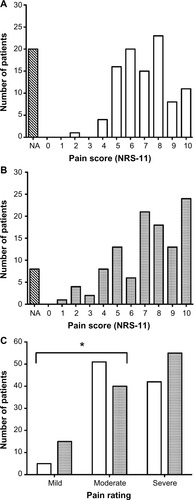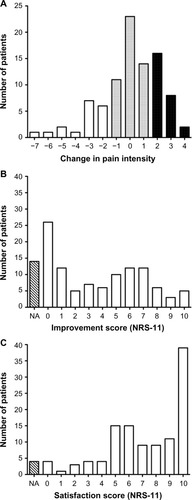Figures & data
Table 1 Demographics and disease characteristics of patients included in the survey
Table 2 Medications on admission and follow-up
Figure 1 Pain-intensity scores on admission and follow-up.
Abbreviation: NA, not applicable (no response recorded).

Table 3 Meaningful changes in BPI-SF variables
Figure 2 Frequency distributions of scores for change in pain, subjective improvement, and patient satisfaction.
Abbreviation: NA, not applicable (no response recorded).

Table 4 Correlation matrix of variables assessed
